Make the best use of Scientific Research and information from our 700+ peer reviewed, Open Access Journals that operates with the help of 50,000+ Editorial Board Members and esteemed reviewers and 1000+ Scientific associations in Medical, Clinical, Pharmaceutical, Engineering, Technology and Management Fields.
Meet Inspiring Speakers and Experts at our 3000+ Global Conferenceseries Events with over 600+ Conferences, 1200+ Symposiums and 1200+ Workshops on Medical, Pharma, Engineering, Science, Technology and Business
Case Report Open Access
Tuberculous Mastoiditis: A rare occurrence
| Gustave Buname1* Justine Namwagala2 Christopher Ndoleriire2 David Alele3 | ||
| 1Department of Otorhinolaryngology and Head and Neck Surgery, Makerere University, Box 7072 Kampala, Uganda | ||
| 2Department of ENT, School of Medicine, College of Health Sciences, Makerere University, Box 7072, kampala, Uganda | ||
| 3Department of pathology, Makerere University, Box 7072 Kampala, Uganda | ||
| Corresponding Author : | Gustave Buname Resident, Otorhinolaryngology and Head and Neck Surgery Makerere University Box 7072, Kampala, Uganda Tel: +256752736955 E-mail: bishop4jesus@gmail.com |
|
| Received August 16, 2013; Accepted September 17, 2013; Published September 22, 2013 | ||
| Citation: Buname G, Namwagala J, Ndoleriire C, Alele D (2013) Tuberculous Mastoiditis: A rare occurrence. J Infect Dis Ther 1:113. doi:10.4172/2332-0877.1000113 | ||
| Copyright: © 2013 Buname G, et al. This is an open-access article distributed under the terms of the Creative Commons Attribution License, which permits unrestricted use, distribution, and reproduction in any medium, provided the original author and source are credited. | ||
Related article at Pubmed Pubmed  Scholar Google Scholar Google |
||
Visit for more related articles at Journal of Infectious Diseases & Therapy
| Introduction | |
| Tuberculous mastoiditis was first described by Jean Louis Petit in the 18th century; Wilde in 1853 presented the classical picture of tuberculosis otitis media as a disease characterized by painless, insidious onset of ear discharge, multiple perforations in the tympanic membrane, and pale granulations in middle ear cleft. Politzer discussed the destructive nature of this disease in 1882. In 1892, Koch demonstrated the tubercle bacilli [1]. The incidence of tuberculosis otitis media has been reported to be 0.04% to 0.9% of all Chronic Suppurative Otitis Media (CSOM) in the developed countries [2,3]. | |
| Tuberculosis affects the middle ear through three routes; aspiration of mucus through the Eustachian tube, blood borne dissemination from other tuberculous foci or direct implantation through the external auditory canal and tympanic membrane perforation [1-3]. The incidence is thought to be more and is on the rise in the developing countries [4]. In recent years extra pulmonary tuberculosis has more frequently been associated with mastoiditis in patients with immunodeficiency state. Although tuberculosis of the mastoid or otomastoiditis is a very rare complication of tuberculosis today, when occurs it may cause significant morbidity. Complications such as facial paralysis and permanent hearing loss may develop [6]. The diagnosis of tuberculous mastoiditis is difficult and may be delayed for months to years, especially if the patient shows no other manifestations of the disease. We present a case of 28 years old man with tubaculous mastoiditis. | |
| Case Report | |
| A 28 years old male present in our clinic with left ear pus discharge for 4 years, left post auricular pus discharge for 1 year and left sided facial weakness for about six months. It all started with left otalgia which was later associated with pus otorrhoea. He was not responding to antibiotics (ceftriaxone and chloramphenicol ear drops). Three years later he developed a swelling behind the same ear that ruptured and was draining pus until the time of admission. No history of convulsions, headache or loss of consciousness. Neither tinnitus nor vertigo was reported. Six months prior to admission he developed left facial weakness with inability to close the left eye, deviated lip but no drooling of saliva. He had no nasal or throat symptoms. He was HIV negative with no history of previous Tuberculosis contact. | |
| On examination, he had multiple bilateral cervical lymphadenopathy, discrete, firm, non tender, widest diameter of 3×3cm levels I, II, III, and V. Grade IV (House and Brackmann) left facial nerve palsy. Otoscopy showed left pus otorrhoea with near total perforation of the Tympanic membrane. The right Tympanic membrane was essentially normal. Chest X-ray was normal, Mantoux test was negative. CT scan showed extensive bone destruction of the left mastoid (Figures 1-3). | |
| Cortical mastoidectomy was done, we found mastoid cavity with extensive pale granulations and fibrous tissues, tegmen plate with a sheet of fibrous tissue dehiscent of some bone. Facial Nerve and semicircular canals couldnot be identified. Tissue was sent for histopathology. | |
| Histopathology report of granulations showed granulomas, composed of epitheloid cells, lymphocytes and occasional giant cells i.e., consistent with tuberculosis (Figures 4-6). Patient was started on antitubercular treatment in which he improved, the ear discharge stopped. He still has facial nerve palsy. | |
| Discussion | |
| The occurrence of tuberculosis of the middle ear has dramatically decreased, from about 1.3%-18.6% in the beginning of the last century, down to 0.04% of all cases of chronic suppurative otitis media according to a recent study report [1]. This could be due to better hygiene, improved laboratory facilities, bacille Calmette-Guerin (BCG) vaccination and a variety of specific drugs [6]. TB of the middle ear and mastoid may occur as a result of haematogenous or lymphatic spread or by extension to the middle ear cleft through the eustachian tube [1- 3,5,7]. | |
| Tuberculous mastoiditis has a classical presentation. It should be considered in patients with chronic middle ear infection unresponsive to routine antibiotic therapy with painless ear discharge, hearing loss disproportionate to the extent of disease and multiple perforations, in some cases central or total perforation. Facial nerve palsy is rare [8]. Our patient had pain in the beginning, with central perforation and facial nerve palsy. Facial nerve palsy associated with tuberculous mastoiditis is seen in approximately 16% of adult cases and 35% of paediatric cases [9]. | |
| Other findings associated with tuberculosis of the mastoid include the presence of caseous material and granulation tissue seen on otoscopy, which may extend into the mastoid and may sometimes be confused with a cholesteatoma [6,10]. Perforation of the tympanic membrane is one of the common features (64–77%) and may be single or multiple [10]. Involvement of the mastoid is frequently shown on the X-ray and on CT as poor pneumatization or clouding due to granulation tissue or complete bone destruction [9,10]. | |
| Diagnosing tubercular otitis media requires a high index of suspicion even in the absence of pulmonary tuberculosis. Demonstration of (Acid Fast Bacilli) AFB in the ear discharge is difficult. The positivity for AFB in ear discharge varies from 5 to 35% and on repeated examinations it improves to 50% [11], diagnosis of extra pulmonary tuberculosis is essentially clinical [4,5] and antitubercular therapy can be started on clinical or histopathological suspicion [12] as done in our case. It’s mandatory to start the treatment early to avoid serious complication. The role of surgery is limited and indications for surgical intervention include cases unresponsive to medical therapy and extensive disease with bone sequestrae. | |
| Conclusion | |
| Tuberculous mastoiditis is very rare. Its diagnosis requires a high index of suspicion. Untreated tuberculous mastoiditis can result in permanent, severe sequel, such as facial paralysis, hearing impairment, and intracranial dissemination of infection. Early suspicion and timely diagnosis are of great importance in resolution of disease and prevention of such serious complications [11]. We have reported a rare presentation of tubercular mastoiditis whose early classical presentation was missed. | |
| Consent | |
| Consent was obtained from the patient for publication of this case. | |
| Competing Interests | |
| We declare that we have no competing interests. | |
| Authors Contributions | |
| GB received the patient and did initial work-up, assisted in the surgery, did literature review, wrote the initial manuscript.CN performed surgery and contributed in review of literature. JN contributed in review of literature and writing of the manuscript. DA assisted in the preparation of histopathology slides and special staining. | |
| Acknowledgement | |
| We would like to thank Doctors and Nurses in our department who participated in the treatment of this patient. | |
References
- Awan MS, Salahuddin I (2002) Tuberculous otitis media: two case reports and literature review. Ear Nose Throat J 81: 792-794.
- Siqueira-Batista R, Palheta-Neto FX, Gomes AP, Pezzin-Palheta AC (2002) Tuberculosis-related middle ear otitis: a rare occurrence. Rev Soc Bras Med Trop 35: 267-268.
- Grewal DS, Baser B, Shahani RN, Khanna S (1991) Tuberculous otitis media presenting as complications: report of 18 cases. Auris Nasus Larynx 18: 199-208.
- Lalit Kant (2004) Editorial Extra-Pulmonary Tuberculosis :Coming out of the Shadows. Indian J Tuberc. 51:189-190.
- Ravi kumar A, Senthil K, Prasanna Kumar S, Gopinath, Gaurav Bambha (2007) primary tubercular mastoiditis-a rare presentation. Sri Ramachandra Journal of Medicine.
- Skolnik PR, Nadol JB Jr, Baker AS (1986) Tuberculosis of the middle ear: review of the literature with an instructive case report. Rev Infect Dis 8: 403-410.
- Karkera GV, Shah DD (2006) Silent mastoiditis-tuberculous aetiology presenting as facial nerve palsy. Indian J Otolaryngol Head Neck Surg 58: 108-110.
- Kim CW, Jin JW, Rho YS (2007) Tuberculous otitis media developing as a complication of tympanostomy tube insertion. Eur Arch Otorhinolaryngol 264: 227-230.
- Hadfield PJ, Shah BK, Glover GW (1995) Facial palsy due to tuberculosis: the value of CT. J Laryngol Otol 109: 1010-1012.
- Lee PY, Drysdale AJ (1993) Tuberculous otitis media: a difficult diagnosis. J Laryngol Otol 107: 339-341.
- Manju M, Agarwal DS, Singh NP, Gadre DJ (1995) Tuberculosis of the middle ear-a case report. Ind J Tub 42: 55-56.
- James R, Vevaina, Roger C. Bone, E (Edwin) Kassoff, Legal Aspects of Medicine.
Figures at a glance
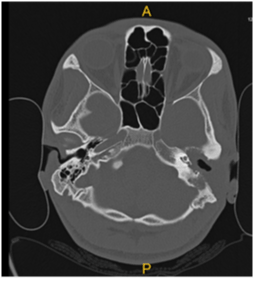 |
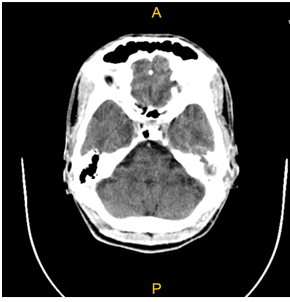 |
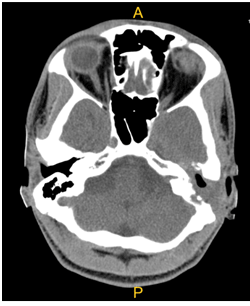 |
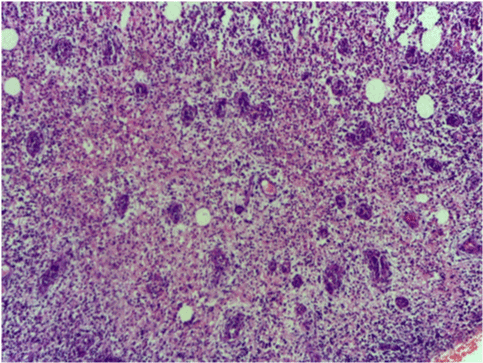 |
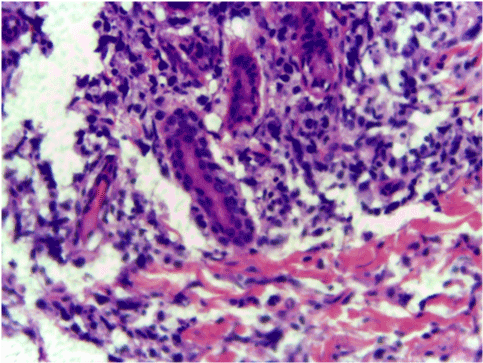 |
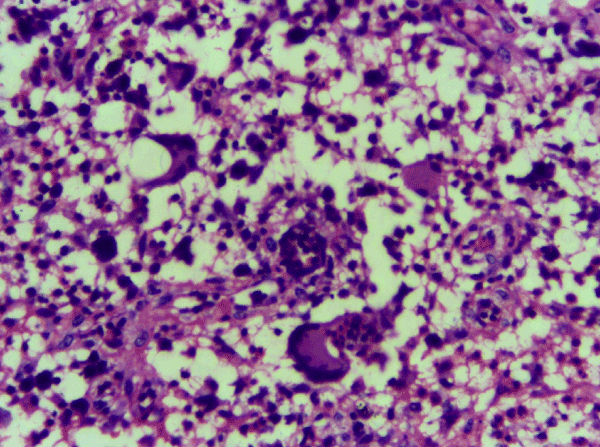 |
|||||
| Figure 1 | Figure 2 | Figure 3 | Figure 4 | Figure 5 | Figure 6 |
Post your comment
Relevant Topics
- Advanced Therapies
- Chicken Pox
- Ciprofloxacin
- Colon Infection
- Conjunctivitis
- Herpes Virus
- HIV and AIDS Research
- Human Papilloma Virus
- Infection
- Infection in Blood
- Infections Prevention
- Infectious Diseases in Children
- Influenza
- Liver Diseases
- Respiratory Tract Infections
- T Cell Lymphomatic Virus
- Treatment for Infectious Diseases
- Viral Encephalitis
- Yeast Infection
Recommended Journals
Article Tools
Article Usage
- Total views: 15482
- [From(publication date):
October-2013 - Jul 16, 2025] - Breakdown by view type
- HTML page views : 10805
- PDF downloads : 4677
